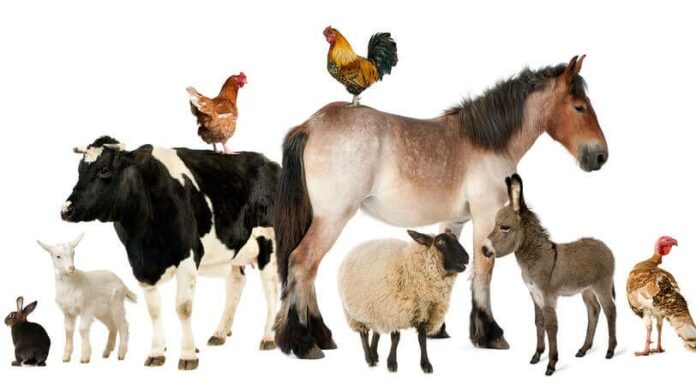Processing Techniques of Roughages
Bilal Chamadia1, Rameez Baloch2
1 Animal Nutrition Division, ICAR-NDRI, Karnal
2 Animal Nutrition Dept., JAU, Junagadh
The basic principle is that processing alters the physicochemical properties of the cellulose/hemicellulose contained in the feedstuffs, so they become more susceptible to microbial degradation in the rumen, increasing the propionate: acetate ratio in the rumen.
There are various processes available that enhance the bioavailability of the nutrients from the roughages. Some of the methods are described hereunder:
- Chaffing:
Chaffing is the process by which the long forage particles are cut into 1- 4 cm long pieces either by hand choppers or motor power operated chaff cutter. By chaffing, the considerable wastage due to soiling and selective feeding of softer parts of the forages is reduced. It increases the density, reduces the time of mastication, and also increases the rate of passage through the gastrointestinal tract which leads to increased voluntary feed intake. Smaller particles require less degradation time in the as it exposes the relatively large surface area of roughages for microbial attachment. Thus, it improves forage digestibility with little cost. During chaffing nails or any metal part if available in the forage will stick to the magnets placed around the machine and that will help in preventing the clinical condition of the animals. The disadvantage is leaf loss is possible during chopping and if green forage has higher moisture content then there is high moisture loss is observed.
- Grinding: In the grinding dry hay and straw are ground to less than 1-inch particle size in length. it will increase the total dry matter intake of poor quality roughage. Feeding of ground forage will reduce the relative acetic acid concentration in the rumen thus milk fat will be dropped. It increases the dustiness of the roughage and to prevent generally molasses is added.
- Shredding:
It is similar to chopping, but in shredding, stems are cut longitudinally rather than crosswise. It is generally used for coarse forages (fodder, stover). Compare to chopping it has been seen that it increases more surface area for the larger exposure to the microbial attachment and due to longer particles it increases the portion of physical effective fiber which helps in increasing rumination, saliva production and improves ruminal motility.
- Baling:
In this method, forage is harvested and settled in the field for drying off. In the high humid areas, a hay conditioner can be used for drying off the forage. The moisture content of the forage should be somewhere around 15-20 percent at the time of baling. Bales are packed or bundles of convenient size of roughages these are usually made round or square-shaped. Round bales can be kept in the field without much damage as such as this can shed the rainwater effectively. Bales can be 20-120 kg in size. In India due to chip labor baling machine is not used and instead, labor is used to bundling the forage which is stored in the farmyard. Baling is generally used in developed countries.
- Cubing:
In cubing dry roughage is sprayed with water moreover with chopping and it is compressed to 2 to 3-inch diameter and 1 to 4-inch length cylindrical cubes. Cubes are just like pellets with a bigger size. It can be cubed in a square shape also. The digestion of soluble and readily-digestible constituents in cubed diets is completed in the rumen, and digesta passes faster than unprocessed fodder. It has the advantage that it can be fed on the ground clean in the pasture without troughs and with minimal wastage during feeding. But the method is a bit costly.
- Pelleting: for pelleting unlike cubing grinding is a must thus pelleting possesses most of the advantages and disadvantages of grinding. The voluntary consumption of pelleted forages is higher as the retention time is lesser, so the efficiency of the animal increases with an increase in propionate content. Pelleting of the forages increases the density and reduces the storage space required as much as 75% reduction can be obtained. It reduces the dustiness of the dry hay and straw. Pelleting is a much expensive method and the forage pelleting process is twice costly compare to the concentrate pelleting process
- Irradiation: Improvement in the digestibility of poor quality roughage is observed when it is treated with high voltage X- rays due to the breaking of cellulose and hemicellulose bonds, which results in the formation of oligosaccharides, which can be utilized by the rumen organisms. Forage lignin is seen to resist irradiation. It also improves the calciferol concentration of the forages by converting ergosterol, a plant sterol. The method is costly and needs high skilled laborers for preventing hazards.
- Water washing
in this method chaffed straw is dipped in water for about two hours. Then water is decanted and washing is repeated twice. This practice is useful for the treatment of paddy straw as it enhances palatability and removes the greater proportion of water-soluble oxalates (oxalates reduce the availability of calcium in animals). Washing does not affect the energy value of paddy straw. This method is very simple and can be adopted easily by dairy farmers.
- Water soaking:
In this method chaffed dry roughages is soaked in water for more than 3-4 hours. Due to the swelling and softening of the straw, the voluntary feed intake of the animal increases by 7-10 percent, which may be attributed to the increased rate of passage through the gastrointestinal tract of the animal.
Take home message:
With the help of technology, we can improve the quality of roughages with little cost which may help in better digestibility of the forages. Some technologies besides improving fodder digestibility also enhance the shelf-life of the roughage and help in maintaining the supply chain of roughage. some of the technologies help in reducing the space requirement thus makes it easy to transport and store bulky forages. Appropriate technology as per the requirement should be opted as per guidance from nutritionist.









